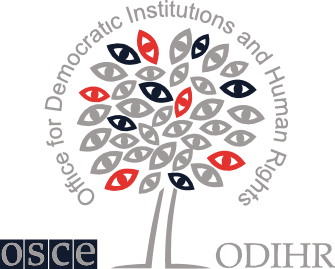US and Canada Smart Border Declaration (2001) (English)
US and CANADA Smart Border Declaration, signed December 12, 2001
Specifics of Secure and Smart Border Action Plan
ACTION PLAN FOR CREATING A SECURE AND SMART BORDERTHE SECURE FLOW OF PEOPLE
1) Biometric identifiersJointly develop on an urgent basis common biometric identifiers in documentation such as permanent resident cards, NEXUS, and other travel documents to ensure greater security.
2) Permanent Resident CardsDevelop and deploy a secure card for permanent residents which includes a biometric identifier.
3) Single Alternative Inspection SystemResume NEXUS pilot project, with appropriate security measures, for two-way movement of pre-approved travelers at Sarnia-Port Huron, complete pilot project evaluation and expand a single program to other areas along the land border. Discuss expansion to air travel.
4) Refugee/Asylum ProcessingReview refugee/asylum practices and procedures to ensure that applicants are thoroughly screened for security risks and take necessary steps to share information on refugee and asylum claimants.
5) Handling of Refugee/Asylum ClaimsNegotiate a safe third-country agreement to enhance the handling of refugee claims.
6) Visa Policy CoordinationInitiate joint review of respective visa waiver lists and share look-out lists at visa issuing offices.
7) Air PreclearanceFinalize plans/authority necessary to implement the Preclearance Agreement signed in January 2001. Resume intransit preclearance at Vancouver and expand to other airports per Annex I of the Agreement.
8) Advance Passenger Information / Passenger Name RecordShare Advance Passenger Information and agreed-to Passenger Name Records on flights between Canada and the United States, including in-transit flights. Explore means to identify risks posed by passengers on international flights arriving in each other's territory.
9) Joint Passenger Analysis UnitsEstablish joint units at key international airports in Canada and the United States.
10) Ferry TerminalsReview customs and immigration presence and practices at international ferry terminals.
11) Compatible Immigration DatabasesDevelop jointly an automated database, such as Canada's Support System for Intelligence, as a platform for information exchange, and enhance sharing of intelligence and trend analysis.
12) Immigration Officers OverseasIncrease number of Canadian and US immigration officers at airports overseas and enhance joint training of airline personnel.
13) International CooperationUndertake technical assistance to source and transit countries.
THE SECURE FLOW OF GOODS
14) Harmonized Commercial ProcessingEstablish complementary systems for commercial processing, including audit-based programs and partnerships with industry to increase security. Explore the merits of a common program.
15) Clearance away from the borderDevelop an integrated approach to improve security and facilitate trade through away-from-the-border processing for truck/rail cargo (and crews), including inland preclearance/post-clearance, international zones and pre-processing centers at the border, and maritime port intransit preclearance.
16) Joint facilitiesEstablish criteria, under current legislation and regulations, for the creation of small, remote joint border facilities. Examine the legal and operational issues associated with the establishment of international zones and joint facilities, including armed protection or the arming of law enforcement officers in such zones and facilities.
17) Customs DataSign the Agreement on Sharing Data Related to Customs Fraud, exchange agreed upon customs data pursuant to NAFTA, and discuss what additional commercial and trade data should be shared for national security purposes.
18) Intransit Container Targeting at SeaportsJointly target marine intransit containers arriving in Canada/US by exchanging information and analysts. Work in partnership with the industry to develop advance electronic commercial manifest data for marine containers arriving from overseas.
SECURE INFRASTRUCTURE
19) Infrastructure improvementsWork to secure resources for joint and coordinated physical and technological improvements to key border points and trade corridors aimed at overcoming traffic management and growth challenges, including dedicated lanes and border modeling exercises.
20) Intelligent Transportation SystemsDeploy interoperable technologies in support of other initiatives to facilitate the secure movement of goods and people, such as transponder applications and electronic container seals.
21) Critical Infrastructure ProtectionConduct binational threat assessments on trans-border infrastructure and identify necessary additional protection measures, and initiate assessments for transportation networks and other critical infrastructure.
22) Aviation securityFinalize Federal Aviation Administration-Transport Canada agreement on comparability/equivalence of security and training standards.
COORDINATION AND INFORMATION SHARING IN THE ENFORCEMENT OF THESE OBJECTIVES
23) Integrated Border and Marine Enforcement TeamsExpand IBET/IMET to other areas of the border and enhance communication and coordination.
24) Joint Enforcement CoordinationWorks toward ensuring comprehensive and permanent coordination of law enforcement, anti-terrorism efforts and information sharing, such as by strengthening the Cross-Border Crime Forum and reinvigorating Project Northstar.
25) Integrated IntelligenceEstablish joint teams to analyze and disseminate information and intelligence, and produce threat and intelligence assessments. Initiate discussions regarding a Canadian presence on the U.S. Foreign Terrorist Tracking Task Force.
26) FingerprintsImplement the Memorandum of Understanding to supply equipment and training that will enable the RCMP to access FBI fingerprint data directly via real?time electronic link.
27) Removal of deporteesAddress legal and operational challenges to joint removals, and coordinate initiatives to encourage uncooperative countries to accept their nationals.
28) Counter-Terrorism LegislationBring into force legislation on terrorism, including measures for the designation of terrorist organizations.
29) Freezing of terrorist assetsExchange advance information on designated individuals and organizations in a timely manner.
30) Joint Training and ExercisesIncrease dialogue and commitment for the training and exercise programs needed to implement the joint response to terrorism guidelines. Joint counter-terrorism training and exercises are essential to building and sustaining effective efforts to combat terrorism and to build public confidence.





